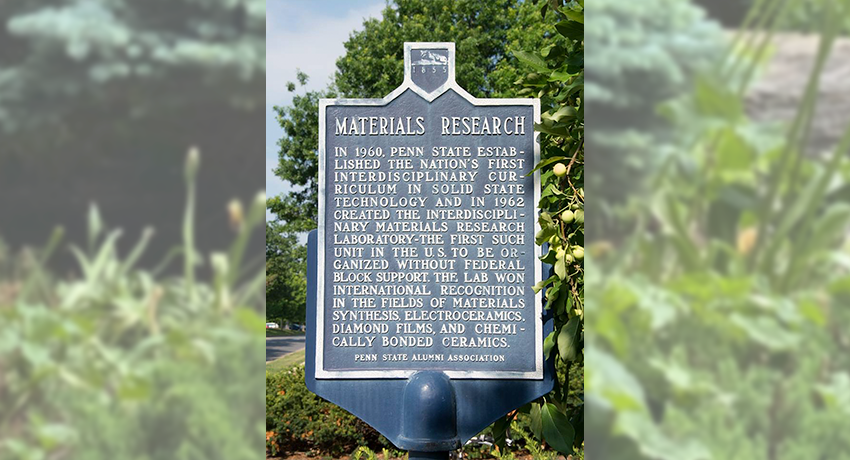The history of materials research at Penn State is long and accomplished. In 1907 the Department of Engineering Mechanics and Materials of Construction (now called Engineering Science and Mechanics) was established beginning Penn State's foray into materials research. Since the establishment of the Metallurgy program in 1908, and the Ceramic Science program in 1923, Penn State has been a pioneer among American universities in materials research.
Many of the research projects are interdisciplinary in character and are carried out as part of the Intercollege Research Program, which was established in 1960. In 1959 Penn State's Solid State Technology graduate program (now called Materials Science) was founded. The success of these programs triggered the formation of the PSU Materials Research Laboratory (MRL) in 1962.
To encourage communication and the exchange of technical information across the various fields of science affecting materials research, the international Materials Research Society (MRS) was founded at Penn State in 1962. Penn State is also part of an international educational and research partnership, the World University Network (WUN), which was launched in April 2003 by a group of research institutions of international standing to further international exchange.
In 1992 the Materials Research Institute (MRI) was created. In 2001, the Materials Research Laboratory was absorbed into MRI. MRI provides leadership both at Penn State and in the materials community worldwide, coordinating a multitude of materials-related activities, encouraging researchers to share equipment and facilities, and fostering collegial exchange of knowledge and expertise. The high concentration of faculty and experts at the university has facilitated the formation of cohesive teams to meet specific materials research goals. The ultimate goal is the creation of new knowledge and the transfer of materials technology to industry and government.
Today, teams of MRI faculty combine their expertise in materials science, chemistry, biology, and engineering, along with theoretical physics and advanced computation, to understand and control the properties of matter. The trend toward smaller, less expensive, and more portable devices for the military, medicine, industry, and consumers is driving the search for components that can perform critical functions at these scales. Devices that were only conceivable in science fiction until recently are now sought-after research goals. Nanoscale science and technology have opened a new toolbox for these endeavors, and the Penn State materials community is an innovator and user of these tools.
The Pioneers Of Materials
Materials at Penn State Historical Poster Project launched in 2017 – The field of materials research is woven from many strands – metallurgy, ceramics, polymer science, physics, chemistry, chemical engineering, electrical engineering, geosciences, the list goes on. The Materials at Penn State Historical Poster Project intends to capture significant people and events related to the illustrious history of materials discovery at this university. The metal-print posters in the ongoing series are on display in the second floor North Wing of the Millennium Science Complex.

